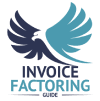
As Warren Buffett once said, “Price is what you pay. Value is what you get.” When it comes to improving cash flow, factoring offers unmatched value compared to merchant cash advances, and it typically comes at a lower price. On this page, we’ll walk you through how each business funding solution works and do a quick factoring vs merchant cash advance comparison, so it’s easy to see which is the best solution for your needs.
How Factoring Works
Factoring is a financial transaction where a business sells its accounts receivable (invoices) to a third party, known as a factor, at a discount. This process provides the business with immediate cash flow, which can be used to cover operating expenses, invest in growth, or manage other financial obligations.
Overview of the Factoring Process
Each factoring company operates uniquely, though most follow a process similar to the one outlined below.
- Invoice Generation: A business delivers goods or services to its customers and issues invoices with payment terms, typically ranging from 30 to 90 days.
- Selling Invoices: Instead of waiting for customers to pay, the business sells these invoices to a factoring company. The factor typically advances a significant portion of the invoice value upfront, often around 60-95 percent.
- Receiving Payment: The factor then collects payment directly from the business’s customers when the invoices are due.
- Final Payment: Once the customers pay, the factor sends the remaining balance to the business, minus a factoring fee, which usually ranges from one to five percent of the invoice value.
Benefits of Factoring
There are several key invoice factoring benefits that make it an attractive option for businesses.
Improved Cash Flow
Factoring provides immediate cash, allowing businesses to cover operating expenses, pay employees, and invest in growth without waiting for customers to pay their invoices. This is particularly useful for businesses with long payment cycles.
No Debt Incurred
Unlike loans, factoring doesn’t add debt to the business’s balance sheet. It simply accelerates the receipt of cash that is already owed to the business, making it one of the more sustainable cash flow solutions for businesses.
Easier Qualification
It’s easy to qualify for factoring. Approval is generally based on the creditworthiness of the business’s customers, not the business itself. This means even businesses with less-than-perfect credit or limited operating history can qualify.
Flexible Funding
Factoring is often more flexible than traditional financing. Businesses can choose which invoices to factor, allowing them to manage their cash flow needs more precisely.
Focus on Core Business
By outsourcing the collection of invoices to a factoring company, businesses can save time and resources, allowing them to focus on their core operations and growth strategies.
Mitigates Credit Risk
Factoring companies often conduct credit checks on a business’s customers, providing valuable insights and helping to mitigate the risk of non-payment.
Scalable Solution
As a business grows and generates more invoices, the amount of financing available through factoring grows as well. This makes it a scalable solution that can adapt to the changing needs of the business.
How Merchant Cash Advances Work

A Merchant Cash Advance (MCA) is a financing option where a business receives a lump sum of cash upfront in exchange for a percentage of its future sales. This method is particularly suited for businesses with regular credit card sales needing quick access to capital.
Overview of the MCA Process
Each MCA provider follows its own process, though advances typically follow the structure outlined below.
- Funding Agreement: A business enters into an agreement with an MCA provider to receive a lump sum of money. The amount advanced is usually based on the business’s average monthly credit card sales.
- Repayment Terms: Repayment is made through a percentage of the business’s daily credit card sales, known as the “holdback.” This percentage typically ranges from ten to 20 percent. Repayments continue until the total amount advanced, plus a fee (the factor rate), is repaid.
- Factor Rate: The fee for the advance is represented by a factor rate, usually ranging from 1.1 to 1.5. For example, if a business takes an advance of $10,000 with a factor rate of 1.3, they will repay $13,000 over time.
Benefits of MCAs
There are several factors that make MCAs appealing to business owners on the surface.
Speed of Funding
MCAs can provide funds very quickly, often within a few days. This is especially attractive for businesses that need immediate cash to address urgent needs, such as repairing equipment, purchasing inventory, or managing unexpected expenses.
Ease of Qualification
Qualifying for an MCA is generally easier than for traditional loans. MCA providers focus on the business’s credit card sales rather than its credit history or collateral. This makes MCAs accessible to businesses with poor credit or those that haven’t been operating for a long time.
No Collateral Required
MCAs are unsecured advances, meaning businesses don’t need to put up any assets as collateral. This reduces the risk for the business owner in case of default.
Flexible Repayment
Repayment is based on a percentage of daily credit card sales, making it inherently flexible. If sales are low, the repayment amount is lower, which can ease the strain on cash flow compared to fixed loan payments.
Predictable Overall Costs
The cost of an MCA is usually fixed and defined upfront through the factor rate. This can provide a clear understanding of the total repayment amount, even if it is higher than other financing options.
Factoring vs. Merchant Cash Advance: Why Choose Factoring
Despite the positives, there are many merchant cash advance disadvantages and reasons why factoring is often the better decision for businesses.

Lower Costs
Factoring typically involves lower fees compared to MCAs. The factoring fee usually ranges from one to five percent of the invoice value, whereas MCAs can have factor rates from 1.1 to 1.5, translating to much higher overall costs. This makes factoring a more cost-effective solution for businesses seeking to improve their cash flow.
Debt-Free Funding
Factoring does not add debt to a business’s balance sheet. It is simply an advance on money already owed to the business through its invoices. In contrast, an MCA is considered a debt that must be repaid, adding financial burden to the business.
Improved Cash Flow Management
With factoring, businesses receive immediate cash for their invoices, allowing for better cash flow management. This enables them to meet ongoing expenses, invest in growth, and avoid the cash flow disruptions that can occur with the daily repayments required by an MCA.
No Negative Impact on Cash Flow
Factoring does not affect a business’s daily cash flow. The factor advances funds upfront and collects payment directly from the business’s customers. In contrast, MCA repayments are deducted daily from the business’s credit card sales, which can strain cash flow, especially during slower sales periods.
Credit Risk Mitigation
Factoring companies often conduct credit checks on a business’s customers. This not only helps mitigate the risk of non-payment but also provides valuable insights into customer creditworthiness. MCAs, on the other hand, do not offer this added layer of security.
Scalability
As a business grows and generates more invoices, the amount of financing available through factoring grows as well. This scalability is advantageous for businesses looking to expand, as it ensures continued access to necessary funds. MCA funding is usually capped based on past sales and doesn’t scale as smoothly with business growth.
Experience the Benefits of Factoring for Yourself
If it sounds like invoice factoring is the better solution for your business funding needs, we’re happy to match you with a factoring company that can help you maximize the benefits and offers competitive rates. Request a complimentary rate quote to get started.
Factoring vs. Merchant Cash Advance FAQs
How does factoring for small businesses work compared to a merchant cash advance?
Factoring advances cash based on unpaid invoices, with the factor collecting payment directly from customers. MCAs provide a lump sum repaid through a daily percentage of credit card sales. Factoring offers predictable cash flow; MCAs can strain cash flow due to daily deductions.
Which is better for my business: factoring or a merchant cash advance?
Factoring is generally better for businesses with unpaid invoices and a need for steady cash flow without adding debt. MCAs are suited for businesses needing quick funds and having regular credit card sales. Consider costs, cash flow impact, and long-term needs when choosing.
What are the costs associated with factoring vs. merchant cash advances?
Factoring fees typically range from one to five percent of an invoice’s value. MCA costs are higher, with factor rates from 1.1 to 1.5, translating to 10-50% of the advance amount. Factoring is usually more cost-effective, while MCAs can be expensive due to higher fees and daily repayments.
How do I qualify for factoring or a merchant cash advance?
Factoring qualifications are based on the creditworthiness of your customers and the value of your invoices. MCAs focus on your business’s credit card sales history. Factoring is accessible to businesses with poor credit, while MCA approval depends on consistent credit card transactions.
Can factoring improve my business’s long-term growth better than a merchant cash advance?
Yes, factoring is generally better for long-term growth. It provides ongoing cash flow without adding debt, allowing for reinvestment in the business. MCAs can be costly and strain cash flow with daily repayments, making them less ideal for sustained growth.
What are the pros and cons of factoring vs. merchant cash advances?
Factoring pros: lower costs, debt-free, improved cash flow, scalability. Cons: dependent on customer credit. MCA pros: quick funding, easy qualification, no collateral. Cons: high costs, daily cash flow impact, and potential strain on finances.
How does the repayment process differ between factoring and merchant cash advances?
In factoring, repayment occurs when your customers pay their invoices, with no impact on daily cash flow. For MCAs, repayment is through daily deductions from your credit card sales, which can vary based on your sales volume and potentially strain daily finances.
Is factoring a debt-free funding option?
Yes, factoring is debt-free. It involves selling your invoices for immediate cash, without adding liabilities to your balance sheet. This helps maintain a healthy financial profile, making it easier to secure additional financing in the future if needed.
Why might a small business choose factoring over a merchant cash advance?
Small businesses might choose factoring for its lower costs, debt-free nature, and predictable cash flow. Factoring is ideal for businesses with unpaid invoices seeking sustainable financing. MCAs, while quick and easy, are costlier and can strain daily cash flow with repayments.
What are some things to consider when comparing factoring and MCAs?
When comparing factoring and MCAs, consider the cost differences, impact on cash flow, qualification criteria, and long-term financial health. Factoring usually has lower fees and doesn't add debt, while MCAs can be costly and impact daily cash flow. Factoring depends on customer creditworthiness, while MCAs rely on credit card sales history.
What's the difference in factoring rates vs. MCA rates?
Factoring rates generally range from one to five of the invoice value. MCA rates, represented by factor rates, typically range from 1.1 to 1.5, which can translate to ten and 50 percent of the advance amount. Factoring is usually more cost-effective compared to the higher costs of MCAs.
What are some alternatives to merchant cash advances?
Alternatives to MCAs include business lines of credit, term loans, invoice factoring, and Small Business Administration (SBA) loans. These options often offer lower costs and more manageable repayment terms, making them more suitable for businesses seeking sustainable financing solutions.

About Invoice Factoring Guide
Related Articles
Get an instant funding estimate
Results are estimates based on the calculated rate and the total invoice amount provided.
Actual rates may vary.
Request a Factoring Rate Quote
PREFER TO TALK? Call us at 1-844-887-0300










